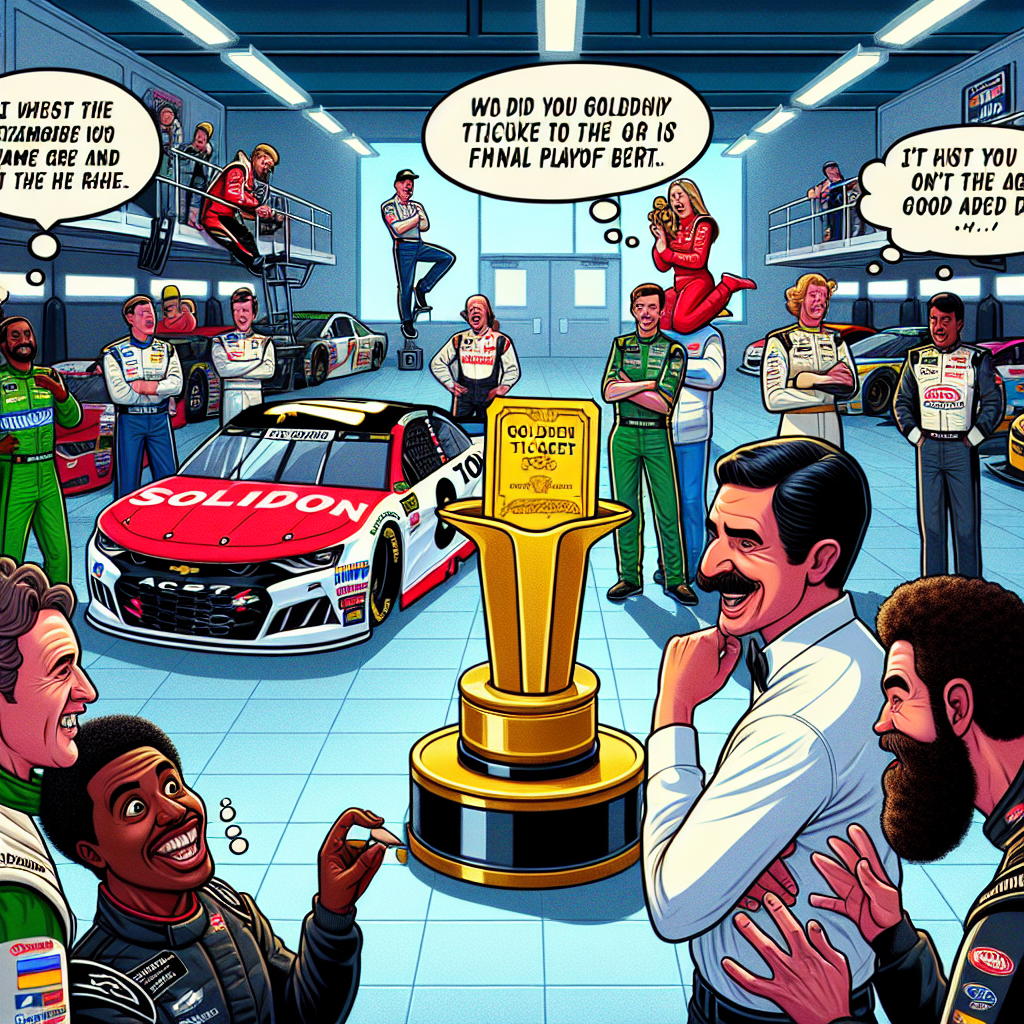Brad Keselowski’s NASCAR Driver Gets Real on Battling Teammates for Final Playoff Birth

Ah, the age-old tale of sibling rivalry — but swap out the family drama for a full-throttle NASCAR garage, and you’ve got yourself a high-speed soap opera where the cars are just as talkative as the drivers. Brad Keselowski’s team is facing the intense, pedal-to-the-metal race to secure that final playoff berth, and the drivers aren’t holding back on getting real about the cutthroat competition — even against their own teammates.
Now, as a guy who delights in dad jokes and driving puns (yes, I’m a wheel of fun), this whole scenario feels like a gnarly pit stop in the race of life. But behind the playful quips and revving engines lies a fascinating study of human nature, teamwork, and fierce competition — all rolled into one. So buckle up, folks — it’s time to explore what it really means to battle your own pit crew brothers and sisters for that last golden ticket to the playoffs.
The Team vs. The Teammates
On paper, teams are supposed to be like a well-oiled machine: synchronized, supportive, and smooth as a freshly waxed hood. But when it comes to securing playoff spots, the friendly race day camaraderie can quickly shift gears into heated rivalries. Keselowski’s squad, like many NASCAR teams, is a mix of seasoned pros and hungry competitors, each eyeing that prized playoff position. It’s less a cozy family picnic and more a high-speed game of musical chairs where the music stops at the checkered flag.
Drivers like Ryan Preece openly acknowledge the challenge of going up against teammates. The irony is thick as engine oil here. They rely on each other for setups, strategies, and secrets but also have to outpace each other or risk being the odd man (or woman) out come playoff time. The battle isn’t just against the field — it’s right in their own backyard, wearing the same colors and logos.
Competitive Spirit: A Double-Edged Wrench
Competition within a team is like trying to share the last donut in the break room: everyone wants a bite, but only one gets the prize. It’s a motivator, no doubt. Without that push-and-pull, drivers might lack the edge needed to push themselves to the limit. Yet simultaneously, it can introduce tension that threatens the harmony required for collective success. It’s like trying to maintain a perfect balance while doing a burnout in the rain — thrilling but tricky.
This internal rivalry, when handled well, can spark remarkable performances. But if it turns toxic, teams risk losing more than just points; they lose cohesion, morale, and sometimes even the trust that fuels teamwork on race day. It’s a delicate dance, and judging by the candid reflections from Keselowski’s camp, they know the stakes are sky-high this season.
The Psychology Behind the Wheel
Let’s take a pit stop under the hood of the psychology at play. When teammates become rivals, it flips the narrative from cooperative to competitive, pushing drivers into a unique mental space. They must maintain professionalism and teamwork but simultaneously guard their own interests fiercely.
Imagine going to work with your best mates, planning strategies together, then turning around to compete with them directly for the same limited rewards. That’s pressure with a capital P. It requires immense mental toughness, emotional intelligence, and a knack for humor — especially the punny variety — to keep things from becoming a total meltdown.
Lessons Beyond the Speedway
This scenario isn’t unique to NASCAR; it mirrors experiences many people face in their workplaces or social circles. We often find ourselves competing with those closest to us, whether it’s for promotions, recognition, or that last slice of pizza at the office party (yes, I measure competitiveness in pizza terms).
The key takeaway? Balancing ambition with teamwork can be as tricky as nailing the perfect pit stop under ten seconds. Yet, it’s doable. It demands empathy, communication, and sometimes a good old-fashioned dad joke to break the tension — like asking, “Why don’t race cars ever get tired? Because they come with their own set of Michelin tires!” Cheesy, yes, but laughter can lubricate even the most strained engines.
Final Thoughts: Racing Toward Respect
Watching Brad Keselowski’s drivers openly talk about their internal battles gives fans a rare peek at the reality behind the glamour and the roar. It humanizes these speed demons who resemble us more than we think — flawed, fiercely competitive, yet capable of respect and growth.
As the playoffs approach and the tension builds, remember that behind every race is a story of perseverance, collaboration, and trust — even when the finish line is a prize that only one driver can claim. Just like a perfectly timed dad joke that lands better than expected, these dynamics keep NASCAR thrilling, relatable, and definitely pun-worthy.
So, next time you see a driver battling not just the track but their own team, give a tip of the hat (or a pun-filled chuckle) to the complex, high-octane world where teammates become rivals and rivals sometimes become the race’s greatest motivators.

